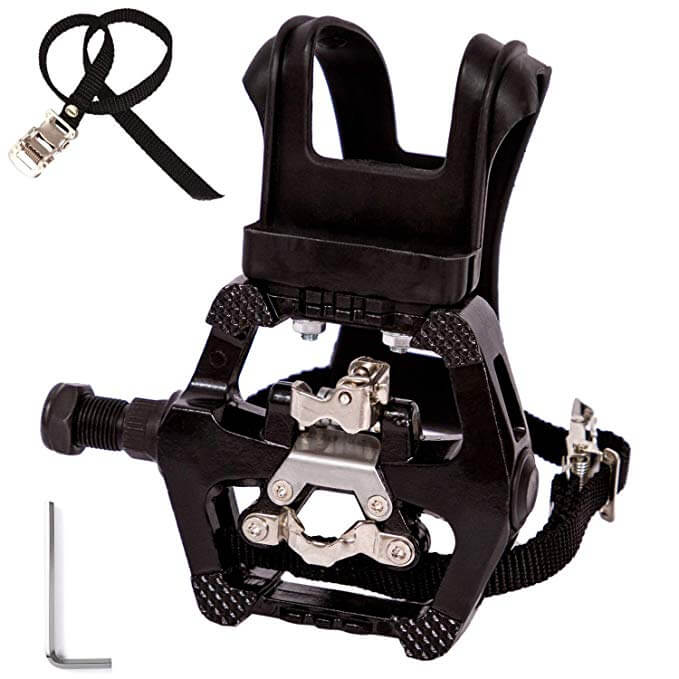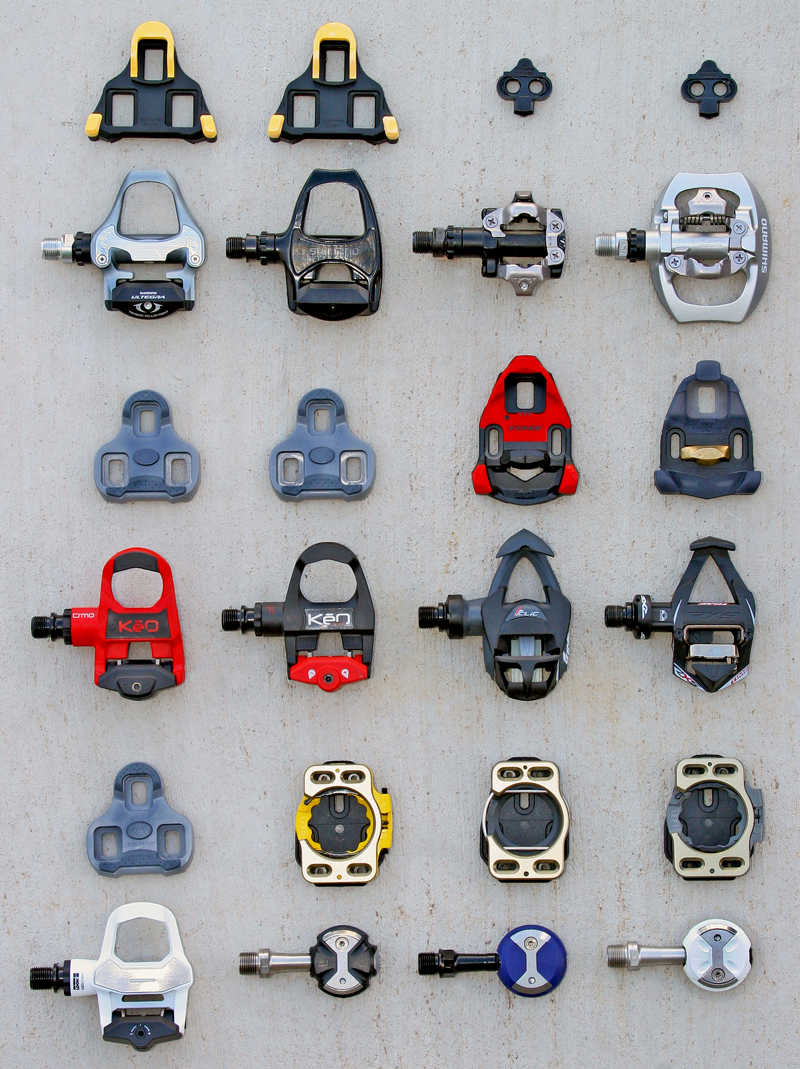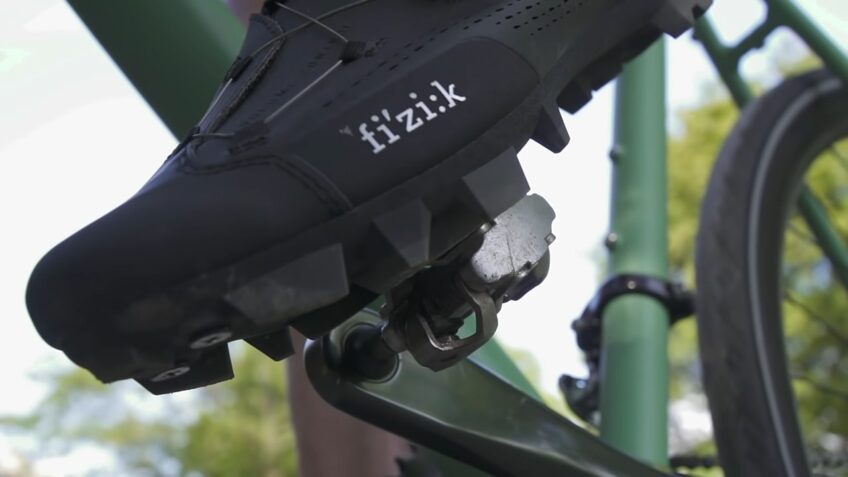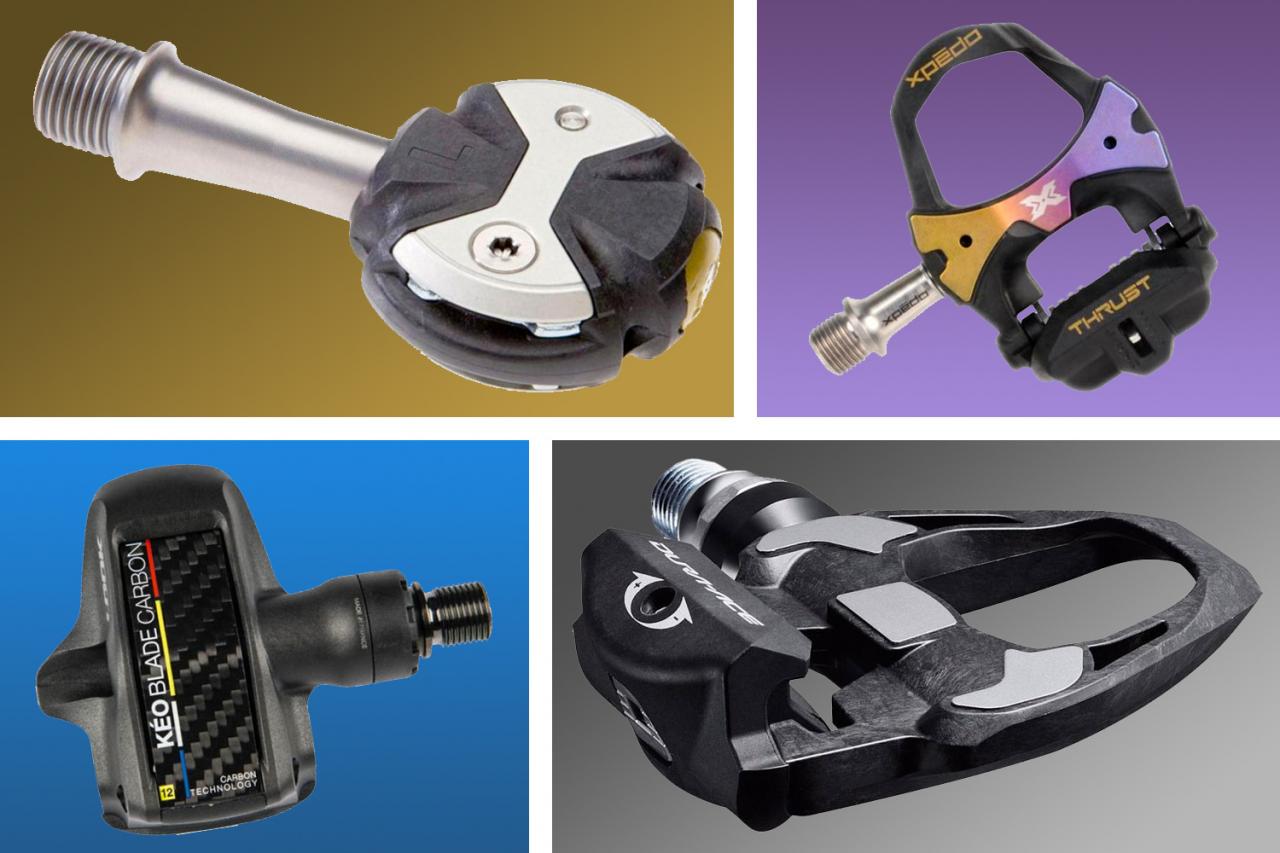Getting Familiar with Clip Pedals: A Beginner’s Guide
Clip pedals, also known as clipless pedals, are a type of bicycle pedal that requires a special type of shoe to attach to the pedal. They offer several benefits over traditional platform pedals, including improved pedaling efficiency, increased power transfer, and enhanced safety. However, to fully utilize the advantages of clip pedals, it’s essential to understand how to use them properly.
One of the primary advantages of clip pedals is their ability to keep the foot securely attached to the pedal, even during intense or bumpy rides. This is achieved through a mechanism that clips the shoe into place, providing a snug and secure fit. To get started with clip pedals, it’s crucial to choose the right type of shoe and pedal combination. There are several types of clip pedals available, including road, mountain, and hybrid pedals, each designed for specific riding styles and terrain.
When selecting clip pedals, consider factors such as compatibility, float, and tension adjustment. Compatibility refers to the type of shoe that can be used with the pedal, while float refers to the amount of movement allowed between the shoe and pedal. Tension adjustment allows riders to customize the amount of force required to clip in and out of the pedal. By understanding these factors, riders can choose the right clip pedals for their needs and ensure a comfortable and efficient ride.
Proper technique is also essential when using clip pedals. Riders should focus on developing a smooth and efficient pedaling stroke, with the ball of the foot centered over the pedal spindle. This helps to optimize power transfer and reduce fatigue. Additionally, riders should practice clipping in and out of the pedal to develop muscle memory and improve their overall riding experience.
While clip pedals offer numerous benefits, they also require proper safety precautions. Riders should always wear the correct type of shoe and ensure that the pedal is properly adjusted to prevent accidents. By following these guidelines and practicing proper technique, riders can unlock the full potential of clip pedals and take their riding to the next level.
Mastering the art of clipless pedaling takes time and practice, but with the right guidance and technique, riders can enjoy a more efficient, comfortable, and safe ride. By understanding the benefits and proper use of clip pedals, riders can improve their overall cycling experience and achieve their goals, whether they’re commuting, racing, or simply enjoying a leisurely ride.
Choosing the Right Clip Pedals for Your Needs
With the numerous types of clip pedals available on the market, selecting the right one can be a daunting task. Popular brands such as Shimano, Look, and Speedplay offer a range of clip pedals designed for specific riding styles and terrain. To ensure a comfortable and efficient ride, it’s essential to consider several key factors when choosing clip pedals.
Compatibility is a crucial factor to consider when selecting clip pedals. Different types of shoes and pedals are designed to work together, so it’s essential to ensure that the pedal is compatible with the shoe. For example, Shimano’s SPD-SL pedals are designed to work with Shimano’s SPD-SL shoes, while Look’s Keo pedals are designed to work with Look’s Keo shoes.
Float is another important factor to consider when choosing clip pedals. Float refers to the amount of movement allowed between the shoe and pedal. Some pedals offer a fixed float, while others offer adjustable float. Adjustable float allows riders to customize the amount of movement to suit their riding style and preferences.
Tension adjustment is also an essential factor to consider when selecting clip pedals. Tension adjustment allows riders to customize the amount of force required to clip in and out of the pedal. Some pedals offer a fixed tension, while others offer adjustable tension. Adjustable tension allows riders to fine-tune the pedal to suit their riding style and preferences.
Other factors to consider when choosing clip pedals include the type of riding, terrain, and personal preference. For example, road riders may prefer a pedal with a fixed float and high tension, while mountain bikers may prefer a pedal with adjustable float and low tension.
Ultimately, the right clip pedal for you will depend on your specific needs and preferences. By considering factors such as compatibility, float, and tension adjustment, you can choose a pedal that provides a comfortable and efficient ride. Whether you’re a seasoned pro or a beginner, the right clip pedal can help you get the most out of your ride.
When learning how to use clip pedals, it’s essential to choose a pedal that suits your riding style and preferences. By selecting the right pedal, you can ensure a comfortable and efficient ride, and get the most out of your cycling experience.
Setting Up Your Clip Pedals: A Step-by-Step Guide
Properly setting up your clip pedals is crucial for a comfortable and efficient ride. In this section, we will provide a step-by-step guide on how to set up your clip pedals, including tips on adjusting the pedal tension, cleat alignment, and float.
Step 1: Install the Pedals
Begin by installing the clip pedals on your bike. Make sure to follow the manufacturer’s instructions for proper installation. Typically, this involves attaching the pedals to the crank arms using a pedal wrench.
Step 2: Adjust the Pedal Tension
Next, adjust the pedal tension to your liking. The pedal tension should be set so that it’s easy to clip in and out, but not so loose that your foot comes out of the pedal while riding. Refer to the manufacturer’s instructions for specific guidance on adjusting the pedal tension.
Step 3: Align the Cleats
Proper cleat alignment is critical for comfortable and efficient pedaling. To align the cleats, place the shoe on the pedal and adjust the cleat so that it’s centered over the pedal spindle. Make sure the cleat is securely attached to the shoe using the manufacturer’s recommended screws or bolts.
Step 4: Adjust the Float
The float refers to the amount of movement allowed between the shoe and pedal. To adjust the float, refer to the manufacturer’s instructions for specific guidance. Typically, this involves adjusting a screw or bolt that controls the amount of movement.
Step 5: Test the Pedals
Finally, test the pedals to ensure they’re properly set up. Clip in and out of the pedals several times to make sure they’re working smoothly and efficiently. Make any necessary adjustments to the pedal tension, cleat alignment, or float.
By following these steps, you’ll be able to properly set up your clip pedals and enjoy a comfortable and efficient ride. Remember to always refer to the manufacturer’s instructions for specific guidance on setting up your clip pedals.
Learning how to use clip pedals requires practice and patience. By properly setting up your clip pedals and following the tips outlined in this article, you’ll be well on your way to mastering the art of clipless pedaling.
Learning to Clip In and Out: Tips and Tricks
Mastering the art of clipping in and out of clip pedals is a crucial skill for any cyclist. With practice and patience, you can develop the technique and confidence to ride efficiently and safely. In this section, we will provide tips and tricks on how to clip in and out of clip pedals, including proper foot positioning, pedal stroke, and body weight distribution.
Proper Foot Positioning
To clip in and out of clip pedals, it’s essential to position your foot correctly. Place the ball of your foot over the pedal spindle, with your toes pointing slightly downwards. This will help you maintain balance and control while pedaling.
Pedal Stroke
A smooth and efficient pedal stroke is critical for mastering the art of clipless pedaling. Focus on using your legs to push the pedals down, rather than just your feet. This will help you maintain a consistent cadence and generate more power.
Body Weight Distribution
Proper body weight distribution is also essential for efficient pedaling. Keep your weight centered over the bike, with your knees bent and your back straight. This will help you maintain balance and control while pedaling.
Clipping In
To clip in, simply place your foot over the pedal and push down gently. Make sure your foot is positioned correctly, with the ball of your foot over the pedal spindle. You should hear a distinct “click” as your foot clips into place.
Clipping Out
To clip out, simply twist your foot outwards and lift it off the pedal. Make sure to keep your weight centered over the bike and your knees bent to maintain balance and control.
Practice Makes Perfect
Mastering the art of clipping in and out of clip pedals takes practice and patience. Start by practicing in a safe and controlled environment, such as a parking lot or a quiet street. As you become more confident and proficient, you can gradually increase your speed and difficulty.
By following these tips and tricks, you can develop the technique and confidence to ride efficiently and safely with clip pedals. Remember to always practice safety precautions and proper technique when using clip pedals.
Learning how to use clip pedals requires practice and patience, but with the right technique and safety precautions, you can master the art of clipless pedaling and take your cycling to the next level.
Common Mistakes to Avoid When Using Clip Pedals
While clip pedals can be a great way to improve your cycling efficiency and performance, there are several common mistakes to avoid when using them. In this section, we will discuss some of the most common mistakes to avoid, including improper cleat alignment, inadequate pedal tension, and poor pedaling technique.
Improper Cleat Alignment
One of the most common mistakes to avoid when using clip pedals is improper cleat alignment. If the cleats are not properly aligned, it can cause discomfort, inefficiency, and even injury. To avoid this mistake, make sure to follow the manufacturer’s instructions for proper cleat alignment and adjustment.
Inadequate Pedal Tension
Inadequate pedal tension is another common mistake to avoid when using clip pedals. If the pedal tension is too loose, it can cause the foot to come out of the pedal while riding, which can be dangerous. On the other hand, if the pedal tension is too tight, it can cause discomfort and inefficiency. To avoid this mistake, make sure to adjust the pedal tension according to the manufacturer’s instructions and your personal preference.
Poor Pedaling Technique
Poor pedaling technique is another common mistake to avoid when using clip pedals. If the pedaling technique is poor, it can cause inefficiency, discomfort, and even injury. To avoid this mistake, make sure to focus on proper pedaling technique, including proper foot positioning, pedal stroke, and body weight distribution.
Other Common Mistakes
Other common mistakes to avoid when using clip pedals include not wearing proper cycling shoes, not adjusting the pedals properly, and not practicing safety precautions. To avoid these mistakes, make sure to follow the manufacturer’s instructions, wear proper cycling shoes, and practice safety precautions.
By avoiding these common mistakes, you can ensure a safe and efficient ride when using clip pedals. Remember to always follow the manufacturer’s instructions, practice safety precautions, and focus on proper pedaling technique.
Learning how to use clip pedals requires practice and patience, but by avoiding common mistakes, you can master the art of clipless pedaling and take your cycling to the next level.
Advanced Techniques for Optimizing Your Pedaling Efficiency
Once you have mastered the basics of clipless pedaling, it’s time to take your pedaling efficiency to the next level. In this section, we will provide advanced tips and techniques for optimizing your pedaling efficiency with clip pedals, including proper pedaling cadence, gear shifting, and body positioning.
Proper Pedaling Cadence
Pedaling cadence is the rate at which you pedal, measured in revolutions per minute (RPM). A proper pedaling cadence is essential for optimizing your pedaling efficiency. Aim for a cadence of 80-100 RPM, which is the optimal range for most cyclists.
Gear Shifting
Gear shifting is another critical aspect of optimizing your pedaling efficiency. Make sure to shift gears smoothly and efficiently, using the correct gear for the terrain and your pedaling cadence. Practice shifting gears in different conditions to develop your skills.
Body Positioning
Body positioning is also essential for optimizing your pedaling efficiency. Make sure to maintain a comfortable and aerodynamic position on the bike, with your hands on the hoods or drops and your back straight. This will help you generate more power and reduce wind resistance.
Core Engagement
Core engagement is critical for maintaining a stable and efficient pedaling position. Engage your core muscles by drawing your belly button towards your spine and maintaining a slight arch in your lower back. This will help you generate more power and reduce fatigue.
Leg Alignment
Leg alignment is also essential for optimizing your pedaling efficiency. Make sure to keep your legs aligned with the pedals, with your knees tracking over your toes. This will help you generate more power and reduce strain on your joints.
By incorporating these advanced techniques into your pedaling routine, you can optimize your pedaling efficiency and take your cycling to the next level. Remember to always practice safety precautions and proper technique when using clip pedals.
Learning how to use clip pedals requires practice and patience, but by mastering these advanced techniques, you can unlock your full potential and achieve your cycling goals.
Troubleshooting Common Issues with Clip Pedals
Despite their many benefits, clip pedals can sometimes be finicky and require troubleshooting. In this section, we will provide advice on how to troubleshoot common issues with clip pedals, such as creaking, grinding, or difficulty clipping in or out.
Creaking or Grinding Noises
If your clip pedals are making creaking or grinding noises, it may be due to a variety of factors, including worn-out bearings, misaligned cleats, or inadequate pedal tension. To troubleshoot this issue, try adjusting the pedal tension, cleaning the pedals and cleats, and lubricating the bearings.
Difficulty Clipping In or Out
If you are having difficulty clipping in or out of your clip pedals, it may be due to a variety of factors, including improper cleat alignment, inadequate pedal tension, or worn-out cleats. To troubleshoot this issue, try adjusting the cleat alignment, increasing the pedal tension, and replacing the cleats if necessary.
Pedal Play or Movement
If your clip pedals are experiencing pedal play or movement, it may be due to a variety of factors, including worn-out bearings, misaligned cleats, or inadequate pedal tension. To troubleshoot this issue, try adjusting the pedal tension, cleaning the pedals and cleats, and lubricating the bearings.
Cleat Wear or Damage
If your cleats are worn out or damaged, it may be due to a variety of factors, including excessive wear and tear, improper cleat alignment, or inadequate pedal tension. To troubleshoot this issue, try replacing the cleats, adjusting the cleat alignment, and increasing the pedal tension.
By following these troubleshooting tips, you can identify and resolve common issues with clip pedals and ensure a smooth and efficient ride. Remember to always practice safety precautions and proper technique when using clip pedals.
Learning how to use clip pedals requires practice and patience, but by troubleshooting common issues, you can optimize your pedaling efficiency and achieve your cycling goals.
Conclusion: Mastering the Art of Clipless Pedaling
Mastering the art of clipless pedaling requires a combination of proper technique, safety precautions, and practice. By following the tips and techniques outlined in this article, you can optimize your pedaling efficiency and achieve your cycling goals.
Remember to always practice safety precautions when using clip pedals, including wearing proper cycling shoes and adjusting the pedal tension and cleat alignment correctly. Additionally, focus on proper pedaling technique, including proper foot positioning, pedal stroke, and body weight distribution.
By incorporating these techniques into your pedaling routine, you can optimize your pedaling efficiency and achieve your cycling goals. Whether you’re a beginner or an experienced cyclist, mastering the art of clipless pedaling can help you take your cycling to the next level.
In conclusion, learning how to use clip pedals requires practice and patience, but with the right technique and safety precautions, you can master the art of clipless pedaling and achieve your cycling goals. By following the tips and techniques outlined in this article, you can optimize your pedaling efficiency and take your cycling to the next level.
So, get out there and start pedaling With practice and patience, you’ll be mastering the art of clipless pedaling in no time.









